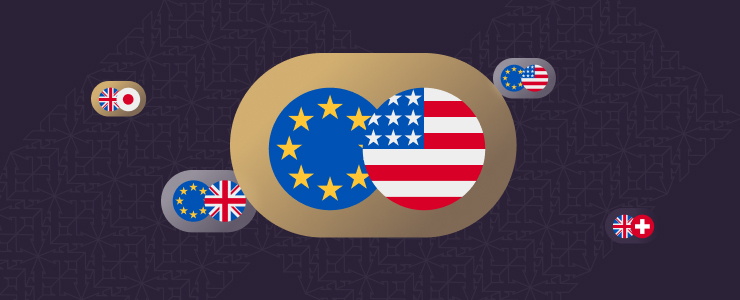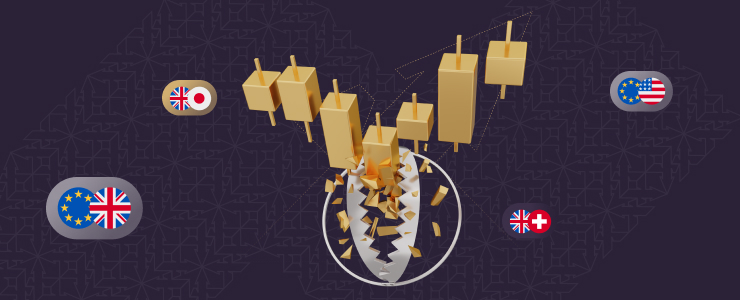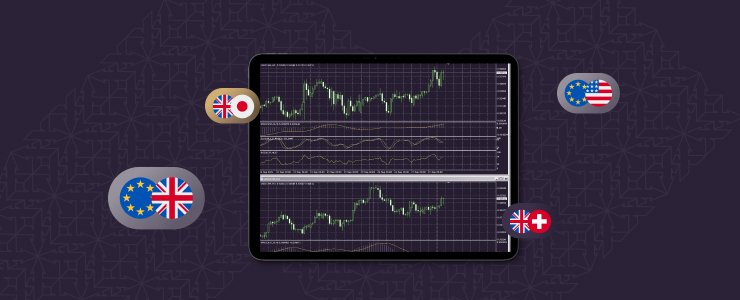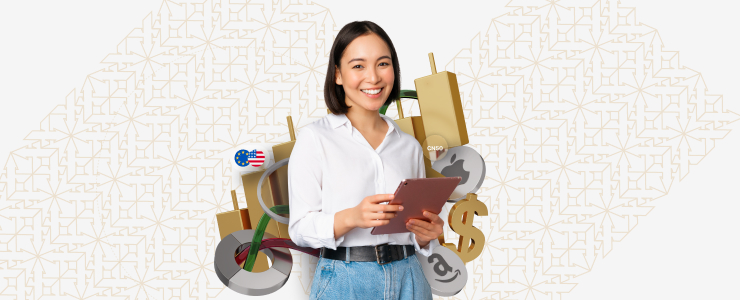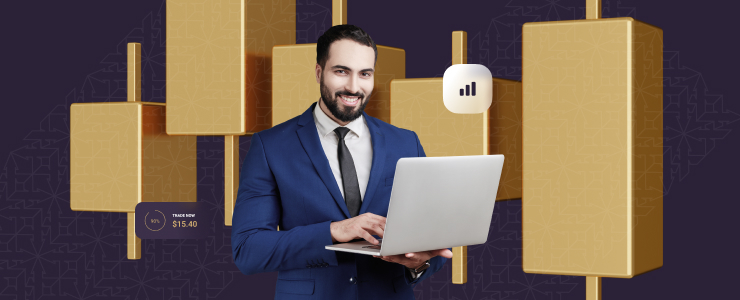Whenever you travel abroad or buy something from another country, you exchange foreign currency and interact with the forex market. But there is a whole financial market beyond just exchanging dollars for euros. The forex market is huge and operates around the clock. In this piece, we cover the basics of forex trading. You’ll learn how it works and how to get started.
What is forex trading?
Forex trading involves buying one currency and selling another to profit from changes in their relative values. It occurs on the foreign exchange market, where daily transactions exceed $7 trillion. Unlike stocks or commodities, forex traders trade electronically over the counter (OTC) via global networks, 24 hours a day, five days a week.
Since traders always trade currencies in pairs, buying one automatically sells the other. For example, if you’re trading the EUR/USD pair, you’re speculating on whether the euro will rise or fall in value compared to the US dollar.

How currency pairs work
Every forex trade is between two currencies. The base currency is the first one in a pair, and the quote currency is the second one. In the pair EUR/USD, the euro is the base currency, and the US dollar is the quote currency.
Types of currency pairs
We categorize currency pairs as majors, minors, and exotics, each group containing different pairs from around the world, some more popular than others.
Major pairs, for instance, EUR/USD or USD/JPY, are very liquid and incur less fees. Minor pairs, like EUR/GBP or AUD/CAD, don’t include the US dollar but are some of the top currencies in the world. Currency pairs feature a major currency paired with a currency from a growing or emerging economy.
An example is the USD/TRY (US dollar/Turkish lira) or EUR/THB (euro/Thai baht). These tend to be riskier and more expensive to trade.
How forex trading works
At its simplest, forex trading is the art of speculating on currency value changes and taking positions on them. If you expect a currency to appreciate, you buy it, but if you expect it to depreciate, you sell it.
In case you believe the British pound will strengthen against the US dollar, for example, you may enter a trade to buy GBP/USD. If the pound does strengthen, the value of that pair will strengthen. You can close your trade for a gain. But if the pound loses value instead, you might lose money.
Analyzing the market
To effectively make informed decisions, there are two main forms of analysis that traders use. Technical analysis looks at price charts and uses indicators like moving averages or trend lines to predict future price movements. Fundamental analysis looks at economic news, changes in interest rates, and geopolitical events that may influence the currency of a nation.
Once you enter a trade, risk management is very important as it will help you protect your funds and limit your losses. Most traders use stop-loss orders to limit how much they may lose if the market moves against them, and take-profit levels to automatically close a trade once it hits a target profit.
Some key forex terms you’ll encounter
As you start studying forex trading, you’ll learn a few basic terms that are useful.
A pip is a unit of measurement that indicates the smallest available price change for most currency pairs. Most times, one pip is 0.0001 of the price that is quoted. So, if the currency pair EUR/USD goes up from 1.1000 to 1.1005, it has increased 5 pips.
Trades are executed in lots, or bundles of units of currency. A normal lot is 100,000 base units of currency, but mini and micro lots are available at 10,000 and 1,000 units, respectively.
Leverage enables you to control a large amount with comparatively low capital. For example, with 1:100 leverage, you can use a $1,000 deposit to place a $100,000 trade. This magnifies both profit and loss, so even though it can increase your returns, it also increases the risk.
You will also find the word spread which refers to the variation between the buy (ask) and sell (bid) prices. The spread is the forex broker’s commission, and it tends to be tighter (smaller) for major currency pairs in periods of high liquidity.

Why do people trade forex?
People are drawn to currency trading for a number of reasons. One of the most important of these is market liquidity, which means you can go in and out of positions with minimal hassle, often without substantial slippage or distortion of prices.
Forex also provides flexibility. Since it’s open 24 hours a day, Monday to Friday, you won’t need to change your schedule to trade.
Another reason is the comparatively low entry cost. Most CFD brokers allow you to fund accounts with relatively small amounts of initial capital and offer practice accounts in the form of demo accounts. And with leverage, even a small amount of capital can give you bigger positions, although, as we’ve suggested, this brings increased gains and potential losses.
How to get started with forex trading
If you’re interested in forex, the first step is to find a trustworthy broker. Look for one that is a well-known authority, offers competitive pricing, and provides an easy-to-use trading platform. Many brokers support MetaTrader 4 which is the most popular among retail traders.
Once you’ve found a broker, it’s a smart idea to set up a demo account. This enables you to trade using virtual funds under real market conditions so that you can feel at ease with the way things run without endangering your hard-earned cash.
When you’re ready to go live, trade with a small stake to start. Start small, using sound risk management, and make sure to risk only a small portion of your capital on a single trade and always use stop-loss orders.
It is also important to have a trading plan. Your plan will need to outline what currency pairs you will be trading, how you will be analysing the markets, your entry and exit strategies, and your risk levels. Staying with a good plan keeps you from making emotional trades, which are generally the downfall of new traders.

Mistakes beginners should avoid
Like any financial market, forex has its risks, and beginners tend to fall into the same pitfalls. One of the largest mistakes is to overuse leverage. Just because you can trade big doesn’t mean you have to. High leverage will quickly eliminate your capital if a trade is working against you.
Another common error is to go into trading without a plan or strategy, simply making blind guesses and trusting in your intuition. It’s also easy to let emotions get in the way, especially after a loss. That typically leads to „revenge trading,“ where traders make illogical trades in an attempt to recover their losses quickly.
Lack of practice and going straight into live trading is risky also. Use demo accounts to build confidence and experiment with strategies before risking real money.
Ready to give it a try?
Traders can explore forex trading at any time of the day, and its high liquidity allows them to pursue significant returns, which makes this market widely popular. However, with potential reward comes potential risk, so it’s critical to enter into forex with preparation and the mindset to learn. Start by building your knowledge and use a demo account to practise.
Choose a reputable broker that supports your growth with educational resources and robust trading tools. And always remember: the goal isn’t just to make one winning trade, it’s to build a strategy that works over the long term. If you’re ready to take the next step, open a demo or live account with Xlence and explore the markets with confidence.
Disclaimer:This information is not considered investment advice or an investment recommendation, but instead a marketing communication.
